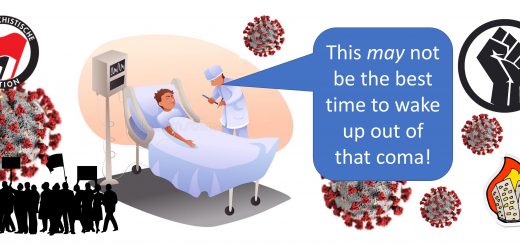Yes! There is Always Time for a Coffee Chat!

Shôn Ellerton, March 25, 2021
Getting people to do things is hard enough, but it is so much easier to meet casually in person rather than sending out a sterile email.
At work, have you ever received an instruction by email to answer a series of questions around how your organisation works, or perhaps, what governance is put in place to make the workplace secure, or any kind of question which warrants a lengthy and complex response? I know I’ve had my share of them. I had one the other day from someone in a related organisation who sat in an office less than two hundred metres on the other side of the square. Both organisations are independent and have no control over each other, but they are required to work together when required.
The email I received was originally sent to my boss’s boss and then sent by my boss to me. There is nothing unreasonable in this at all as I was positioned as possibly being the best to answer the questions. I read the questions, about a dozen or so, each demanding a well-versed thought out answer, many of which needed more context to understand what was required of me. It was stated at the bottom of the email that a submission needed to be made by the end of the week. I alerted this to my boss who agreed with me that it was not appropriate to drop other priorities to respond to this request from an organisation who had no authority over ours. I suggested, to my boss, that I phone the contact on the email and that we meet in person over a coffee across the road. He agreed.
Now, interestingly, I had worked at this other organisation and, in addition, recognised the name of the person on the email who worked in the same team I used to be on. Feeling no particular need to make a formal introduction, I phoned him up and suggested we take a half-hour over a cup of coffee in one of the cafes along the square to run over the requirements to get a little more context. The response was not mutual as he exclaimed that he had no time during the week to do so, nor it seemed the week after either. However, it seemed reasonable to him that we had to make the time to respond to the questions in writing and submit them by the end of the week. Our response was that we would not be able to deliver the answers in the space of a week between other priorities we had to complete unless directed from our superiors to do so. In other words, it would have to wait.
It turned out that he had given the task of meeting us for a chat to a newly joined temp, a woman I had not met. She set up a meeting at the coffee shop I suggested we meet. I took my boss along. She was very pleasant and professional, and we gave her the answers she needed. We pointed her in the right direction to others in our organisation who would be able to answer some of the other questions we were unable to answer. In all, that half-hour chat which her manager could not find the time to muster probably saved countless hours of to-ing and fro-ing of emails being sent around our organisation trying to find the right person to answer the questions and having the time and inclination to do so.
I do find this kind of behaviour exhibited by her manager in the professional workplace somewhat lacking in etiquette and respect. If one cannot sacrifice a half-hour in a week to meet in person not more than two football pitches away and then expect someone else to sacrifice considerably more than a half-hour to deliver a piece of work of low priority (at least, for our organisation), this shows a lack of awareness and courtesy. A lack of awareness for not knowing what our priorities are and a lack of courtesy for assuming that their delivery requirements are more important than ours. However, the outcome proved successful when, discovering that we were not going to drop our other priorities to submit the work unless we meet up in person, he sent out a member of his team in his place.
This amply illustrates my story that meeting up in person is so important. It puts a face to a name. It is an easy way to network with others making further formal introductions unnecessary. It is, of course, not always practical to meet in person, usually due to geography constraints and more recently, related to pandemic restrictions. However, if that is the case, then at least follow up with a phone call. It is subjective, and it does vary from person to person, but in preference of making first contact, I tend to choose meeting in person. If not, a phone call, voice only. Paradoxically, when it comes to meeting people first time using video conferencing, it is more intimidating than voice only; however, it is often easier to meet physically in person.
The upshot of this story is that if it is easy enough to meet in person, then just do it.


